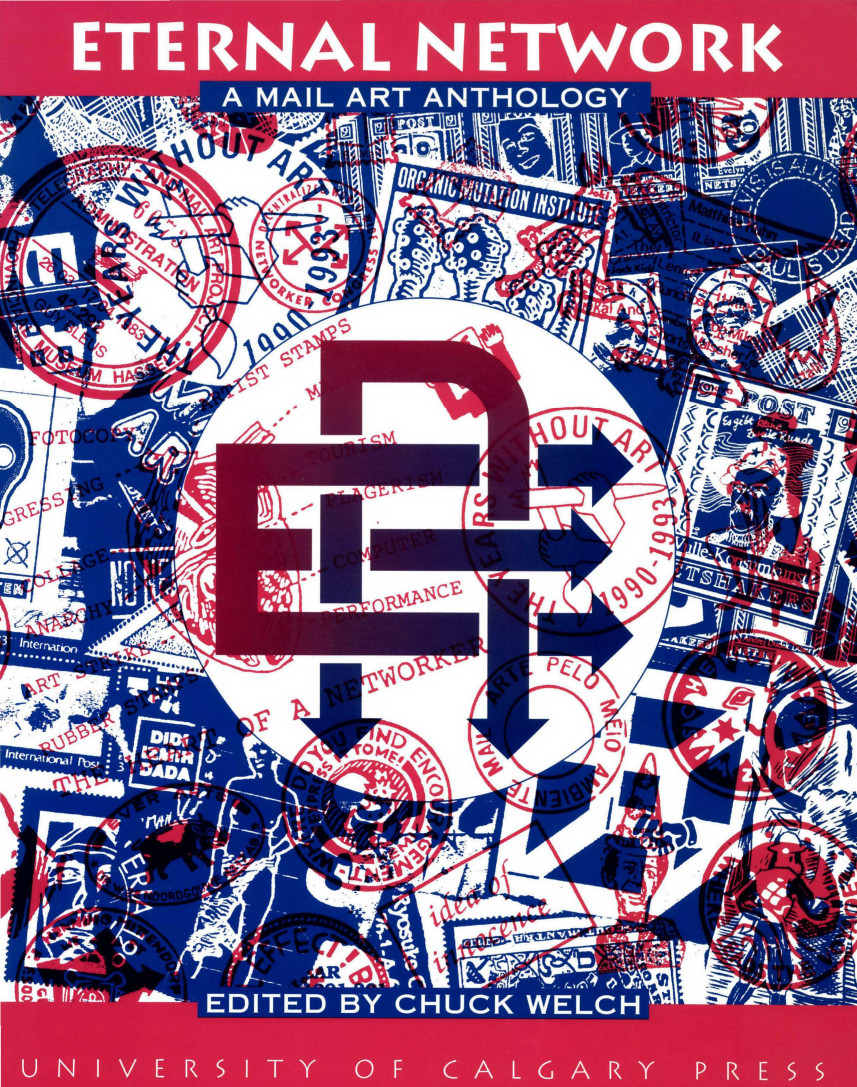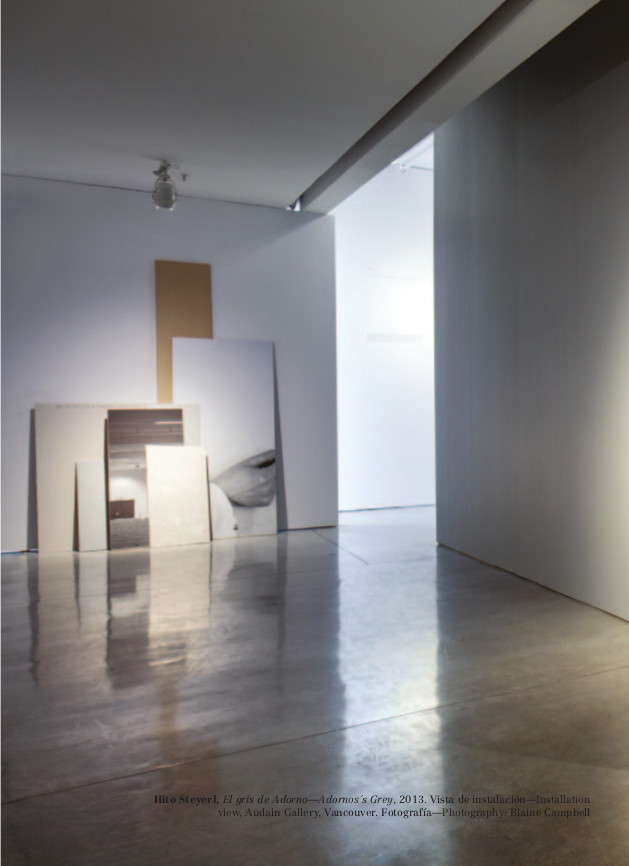Chuck Welch (ed.): Eternal Network: A Mail Art Anthology (1995)
Filed under book | Tags: · art, art history, artists book, computer art, dada, fluxus, internet, mail art, network art, networks, visual poetry, zine culture

“This book is the first university press publication in academia to explore the historical roots, aesthetics and new directions in mail art. The essays of Eternal Network were written and assembled during the early 1990s by mail artist, writer, and curator, Chuck Welch. The edition contains forty illustrated chapters surveying an international community whose mailboxes and computers were a proto internet bridging the analog and digital world of art and communication. Eternal Network includes numerous photographs of mailed artifacts, performance events, congresses, stampsheets, posters, collages, artists’ books, visual poetry, computer art, mail art projects, zines, copy art and rubber-stamped images.
The book is divided into six parts: Networking Origins, Open Aesthetics, New Directions, Interconnection of Worlds, Communication Issues and Ethereal Realms. Appendixes include mailing addresses from the 1990s, mail art exhibitions, a listing and location of over 350 underground mail art magazines and a comprehensive record of public and private international mail art archives. The late Judith Hoffberg, founder of Art Libraries Society of North America (ARLIS) and editor of Umbrella Magazine, wrote an astute and prophetic review of Eternal Network in March 1995. “Some might think that this is the last gasp of a paper-orientated group of artists, but it is more a testament to the future of alternative art and the role of artists as networker”.”
With a Foreword by Ken Friedman
Publisher University of Calgary Press, Calgary, 1995
ISBN 1895176271, 9781895176278
xxiii+304 pages
via Chuck Welch, (2)
PDF (147 MB)
Comments (2)Hito Steyerl: Circulacionismo. Circulationism (2014) [English/Spanish]
Filed under book, catalogue | Tags: · art, capitalism, contemporary art, documentary, image, internet, politics, video

“Using video installations and reflection in essays, Hito Steyerl presents a critical apparatus for analyzing the way in which the images produced by television, cinema and contemporary art are inscribed in a visual and economic regime. These are produced, circulated, distributed and consumed in a framework of audiovisual capitalism and form part of different institutional mechanisms of the art world, including the museum. From this perspective, the images are converted into a vehicle of social relations with an ambivalent status insofar as they are both commodity and means of political statement. A second problem raised by the artist is the truth condition of images. Her work repeatedly makes use of appropriated or poor-quality images, together with documentary-type elements, with the aim of questioning the relationship between documentary, reality and representation.”
This book contains Steyerl’s essays “Too much world: Is the Internet dead?” and “Theodore W. Adorno. Timeline”, and the essay “Weather for Liquidity” by Brian Kuan Wood.
Published on the occasion of the exhibition Hito Steyerl: Circulationism held from 27 September 2014 – 1 March 2015 at MUAC in Mexico City which brought together three of her recent works: Adorno’s Grey (2012), Museum as Battlefield (2012) and Liquidity Inc. (2014).
Publisher Museo Universitario Arte Contemporáneo (MUAC), Universidad Nacional Autónoma de México (UNAM), Mexico City, 2014
Folio MUAC series, 23
ISBN 6070257545, 9786070257544
71 pages
The Boy Who Could Change the World: The Writings of Aaron Swartz (2015)
Filed under book | Tags: · code, copyright, hacking, hacktivism, intellectual property, internet, internet activism, open access, web

“The writings of the computer genius and Internet hacktivist whose tragic suicide shook the world
In January 2013, Aaron Swartz, under arrest and threatened with thirty-five years’ imprisonment, committed suicide. He was twenty-six. But in his short life he had changed the world: reshaping the Internet, questioning our assumptions about intellectual property, and creating some of the tools we use in our daily online lives. He was also a leading critic of the politics of the Web.
In this collection of his writings that spans over a decade, Swartz displays his passion for and in-depth knowledge of intellectual property, copyright, and the architecture of the Internet. The Boy Who Could Change the World contains the life’s work of one of the most original minds of our time.”
With an Introduction by Lawrence Lessig
Publisher The New Press, New York/London, 2015
ISBN 162097066X, 9781620970669
368 pages
See also MIT prosecution report.
Comment (0)
